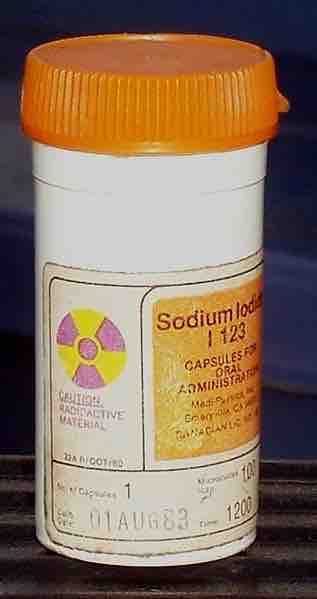A radioactive tracer is a chemical compound in which one or more atoms have been replaced by a radioisotope. By virtue of its consequent radioactive decay, this compound can be used to explore the mechanism of chemical reactions by tracing the path that the radioisotope follows from reactants to products.
The underlying principle in the creation of a radioactive tracer is that an atom in a chemical compound is replaced by another atom of the same chemical element. In a tracer, this substituting atom is a radioactive isotope. This process is often called radioactive labeling. Radioactive decay is much more energetic than chemical reactions. Therefore, the radioactive isotope can be present in low concentration and its presence still detected by sensitive radiation detectors such as Geiger counters and scintillation counters.

Geiger Counter
Image of a Geiger counter with pancake-type probe
There are two main ways in which radioactive tracers are used:
- When a labeled chemical compound undergoes chemical reactions, one or more of the products will contain the radioactive label. Analysis of what happens to the radioactive isotope provides detailed information about the mechanism of the chemical reaction.
- A radioactive compound can be introduced into a living organism. The radio-isotope provides a way to build an image showing how that compound and its reaction products are distributed around the organism.
All the commonly used radioisotopes (Tritium (3H), 11C, 13N, 15O, 18F, 32P, 35S, 99mTc, and 123I; see ) have short half-lives. They do not occur in nature and are produced through nuclear reactions.

Iodine; 123 Radioisotope
Lead container containing iodine-123 radioisotope